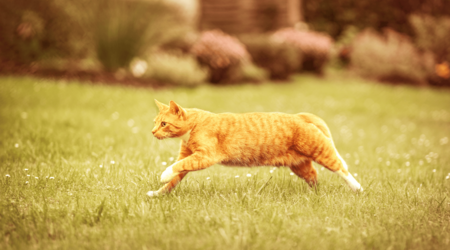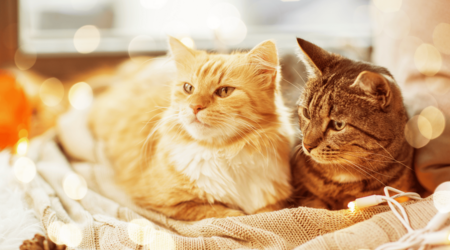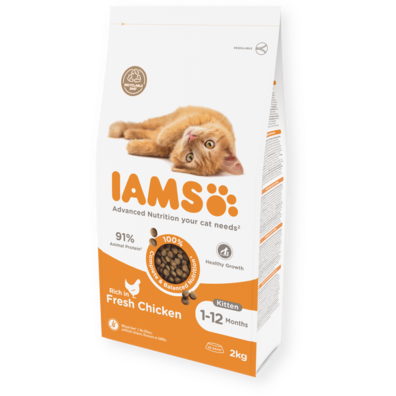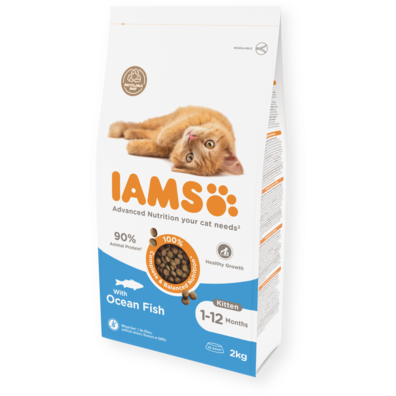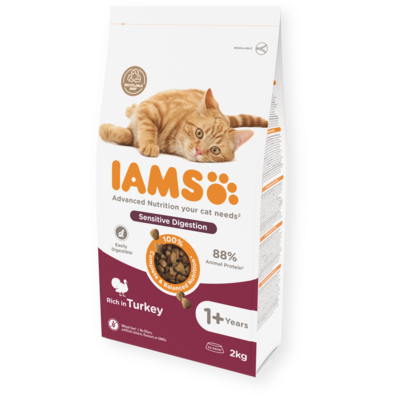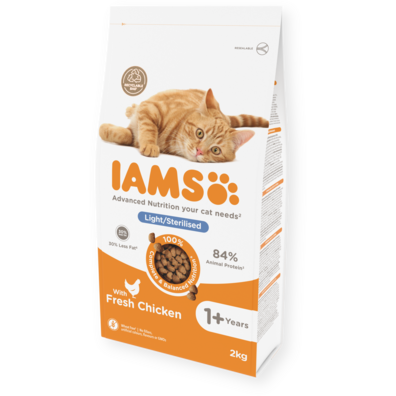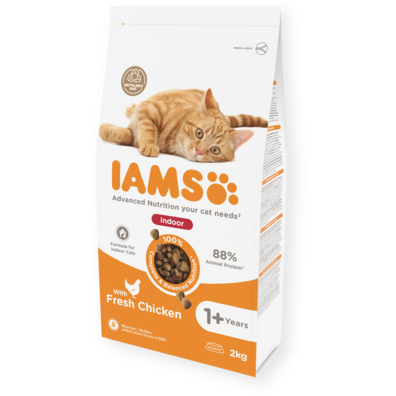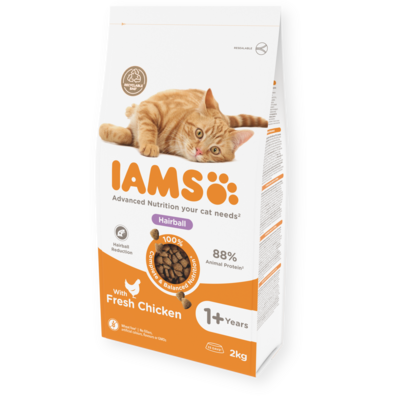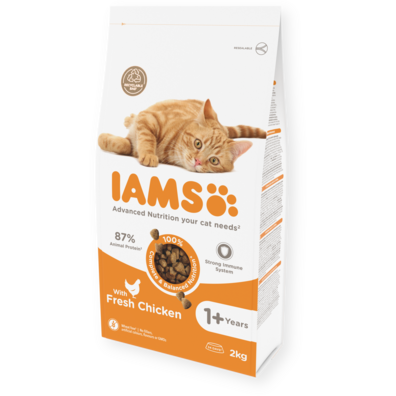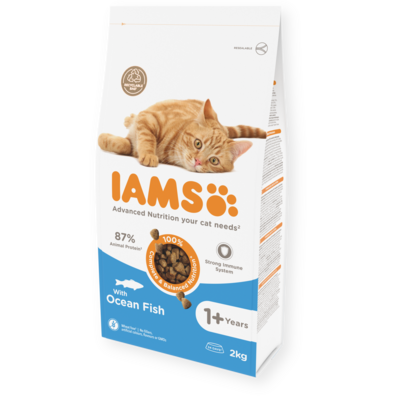How the aging process affects your cat
Just like their human companions, cats experience a gradual decline in organ function as they age. These age-related changes include a natural slowing of the cat's resting metabolic rate (RMR), resulting in a decrease in muscle and an increase in body fat, which also increases the likelihood of obesity. While energy needs vary from pet to pet, cats between the ages of 7 and 9 years are at the highest risk for obesity. It is important for you to watch your cat's intake, weight status and physical activity to help offset age-associated loss of muscle.
Remember that your ageing pet has the same nutrient needs as during her earlier years. However, the quantities and the way in which they are provided may have to change. As her metabolism changes, select a diet that is less energy-dense, while still providing essential nutrients.
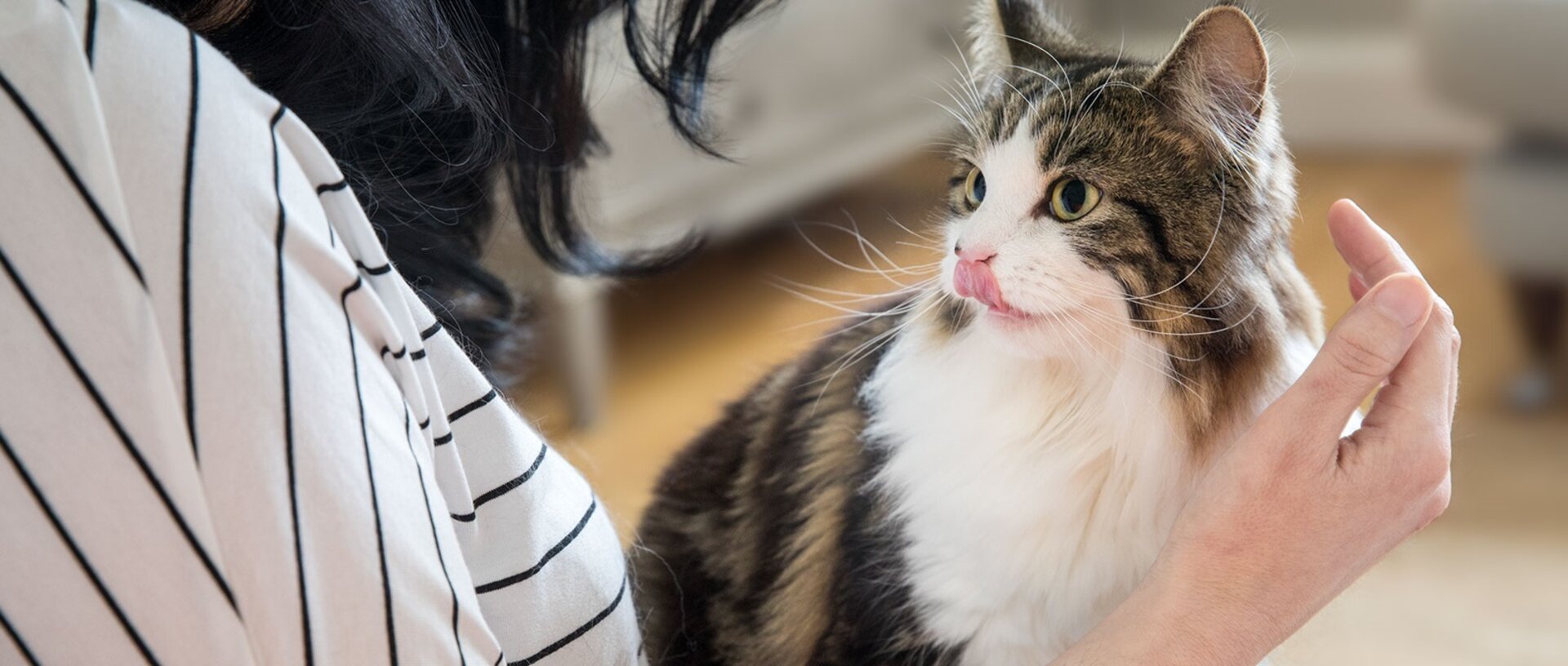
Visible signs of aging
A sure sign that your cat is entering old age is when she does not jump onto her favorite perch as easily, sleeps more and moves more slowly when awake. In addition, her skin loses its elasticity and becomes less pliable. The decrease in skin elasticity may result in areas of hair loss. Old age also brings a decrease in bone mass. This may be due, in part, to the inadequate absorption of calcium. The age for these developments is around 12 years in cats. Arthritis commonly occurs in mature cats, too, and can be made worse by obesity. Some of this can be managed by proper nutrition, medical therapy and nutriceuticals.
Old age in general may result in a reduction in response to a cat's surroundings and partial loss of vision, hearing and taste. To avoid startling your loving pet, it's a good idea to let your cat see your hand in front of her face before touching her and to call her name before approaching.
Special dietary needs
- Hairball Prevention
A mature cat can still develop hairballs and some may experience an increase in hairballs. To help minimise the development of hairballs, feed your cat a diet with a unique combination of beet pulp and cellulose fiber. - Mature/Senior Cat Needs
Ageing pets should be fed a diet with a higher percentage of calories from high-quality animal protein and with antioxidants and essential amino acids, like taurine, to help maintain healthy muscle mass and immune function. A little less fat in the diet may also help mature cats if their diet remains rich in fish oils to promote overall health and a beautiful, shiny coat.
Special dental needs
Proper tooth and gum care is also important for older pets. Dry foods may assist in maintaining good dental and oral health. You may also need to schedule regular appointments with your veterinarian to monitor tartar build-up or periodontal disease.
Behavioural changes in your aging pet
One of the most noticeable changes in mature pets is their resistance to change in their daily routines. Older cats may become more finicky about their eating habits. With a decreased sense of smell and taste, it may be necessary to provide a food with a stronger smell and taste.
As your mature cat slows down, short sustained periods of physical activity will help to enhance circulation, maintain muscle tone and prevent excess weight gain. The level and intensity should be adjusted to your pet's medical condition. Encourage a healthy exercise routine by playing games with your cat for 15 to 30 minutes at least twice a day.

